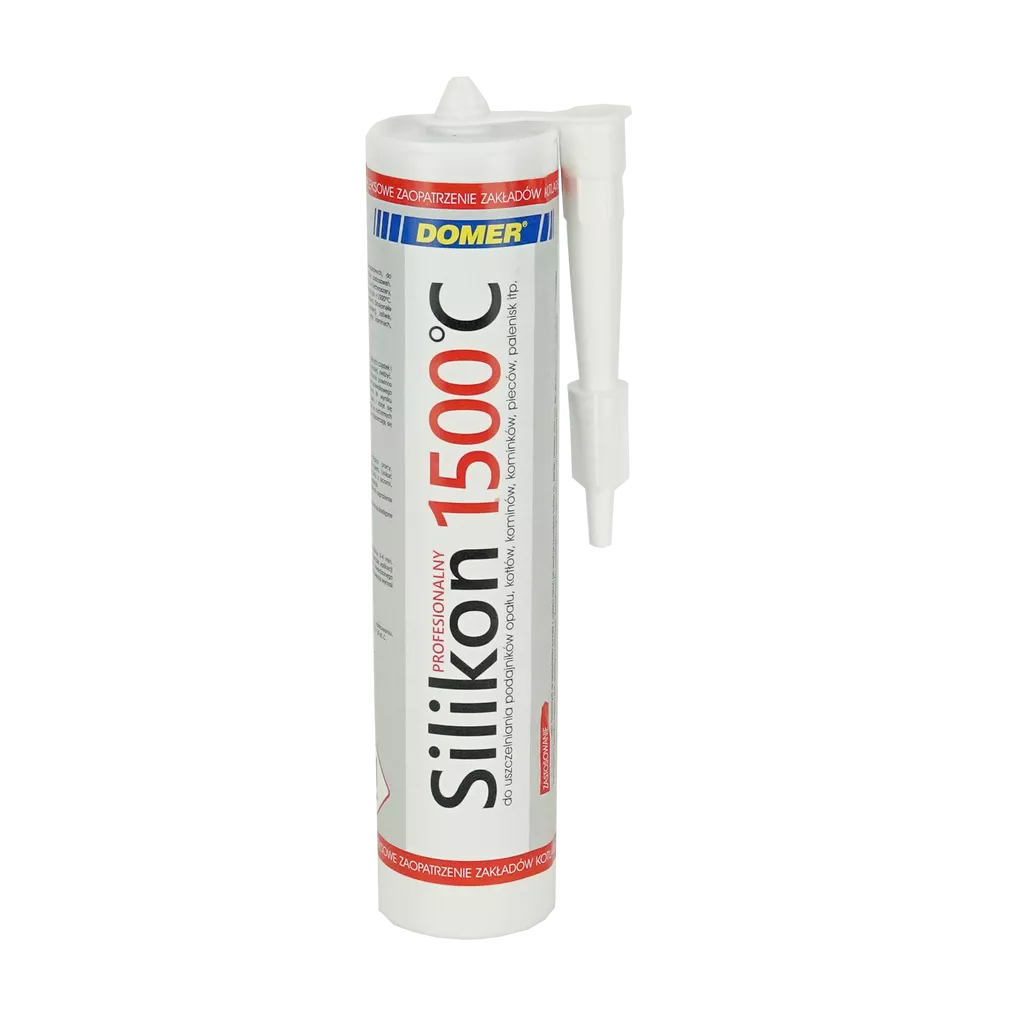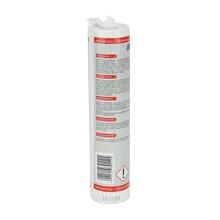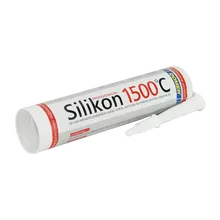Fire resistant high temperature silicone 1500 OC black DOMER
Domer high-temperature fire-resistant silicone is a high-quality sealant for places exposed to direct contact with fire, e.g. fireplaces, stoves, hearths, grills, boilers, etc. It enables heat-resistant fixing and sealing of elements made of stone, concrete and cast iron, e.g. fireplace inserts, grates and sealing joints fire-resistant bricks and blocks, e.g. tiled stoves.
After hardening, the sealant is resistant to temperatures up to +1500 OC. Direct contact with fire is allowed. The sealant does not shrink, does not crack in static joints. It adheres well to porous surfaces, i.e. chamotte, concrete, stone, and fire-resistant building ceramics. Asbestos-free. It is non-toxic. Fire resistant.
- Add feedback:
- Code: 8903
- Manufacturer: DOMER
- Manufacturer's code: 5902429301124
- Weight: 0.8 kg
-
Availability:
 AVAILABLE NOW
AVAILABLE NOW
- Net Price: €4.65 €5.72
- pcs.
-
Payment in cash, Payment via bank transfer, Online Payments Payment Cards, ApplePay, Google Pay - P24, PayPro SA, Payment by bank transfer - wait for the proforma invoice to be sent
-
Fast Blik payments.
The product is shipped within 24 hours.
We complete the order within 24 hours.
You can return the product within 14 days.
Domer high-temperature fire-resistant silicone is a high-quality sealant for places exposed to direct contact with fire, e.g. fireplaces, stoves, hearths, grills, boilers, etc. It enables heat-resistant fixing and sealing of elements made of stone, concrete and cast iron, e.g. fireplace inserts, grates and sealing joints fire-resistant bricks and blocks, e.g. tiled stoves.
After hardening, the sealant is resistant to temperatures up to +1500 OC. Direct contact with fire is allowed. The sealant does not shrink, does not crack in static joints. It adheres well to porous surfaces, i.e. chamotte, concrete, stone, and fire-resistant building ceramics. Asbestos-free. It is non-toxic. Fire resistant.
Technical parameters:
thermal resistance after hardening: up to +1500 OC
processing time: up to 30 min.
full hardening time: 1-2 mm / 24 h
allowable weld deformation: 0%
application temperature: from +15 to +40 OC
package content: 300 ml
Fireplaces, apart from decorative functions, can be an alternative source of home heating. However, their effectiveness decreases significantly when they are leaky. To avoid heat loss, it is worth sealing stoves and chimney ducts. Fire-resistant silicone, resistant to temperatures up to +1500 OC, is dedicated for this purpose.
The word fireplace is currently used to describe both traditional, open hearths and enclosed, closed fireplace inserts. Regardless of the type, a well-installed fireplace stove can keep the interior warm for up to 16 hours. However, in the process of use, due to the erosive effect of high temperatures, small gaps may appear in the construction of the fireplace and flue. In order to prevent energy loss and a decrease in the efficiency of the furnace, it is worth periodically inspecting it, and use fire-resistant silicone to fill leaks.
Critical points of the fireplace
An uneven flame and an increased amount of combusted material in a closed fireplace, where the hearth is separated by a glass, may mean damage inside the insert. Gaps can appear both at the contact between the glass and the door seal, as well as at the joints of the walls of the housing or ash pan, which due to direct contact with the flame itself are most exposed to its destructive effect.
In the case of open fireplaces, the problem of leaks usually concerns chimney ducts. The first symptom of damage is an intense burning smell caused by smoke entering the house. These damages should be repaired as soon as possible using an agent that is resistant to very high temperatures. Such a feature has silicone, which maintains the stability of parameters regardless of temperature fluctuations. Its thermal resistance is up to +1500 OC.
Around the hearth
Silicone has excellent adhesion to metal, brick and cement, thanks to which it is used within the entire structure of the fireplace or stove. It can also be successfully used on garden grills due to its resistance to weather changes and UV rays. The joint does not shrink or expand after application, therefore this product is recommended for rigid seals.
Silicone is extremely easy to use due to the tip it has been equipped with. The use of a rotating head makes it easier to apply the joint in hard-to-reach places inside and outside the fireplace of any type. By properly positioning the tip, we can apply the preparation freely from each side - from the bottom, side, top or back. This is of great importance especially when working in the furnace chamber or in the chimney duct, where the space for performing the work is significantly limited. The sealant is applied directly from the cartridge. The processing time requires the preparation to be applied once to a small area. Due to the consistency of the sealant, it is recommended to use a squeezer for thick masses.
Informacje o bezpieczeństwie produktu
Informacje o producencie


